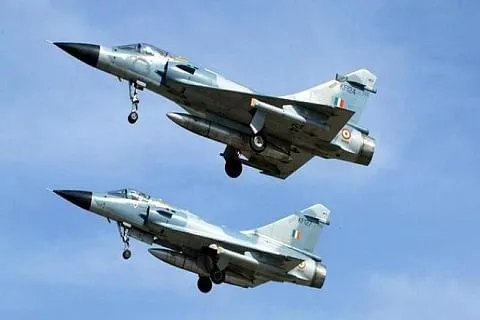If the Indian Air Force possessed high levels of “technological asymmetry”, then it would have been able to inflict heavy damage on Pakistan during the adversary’s unsuccessful aerial raid on February 27, according to an IAF report.
The report analysed various aspects of IAF’s air strike on aJaish-e-Mohammad (JeM) training camp in Pakistan’s Balakot on February 26 andthe subsequent Pakistani retaliation the following day.
India carried out the air strike to avenge the Pulwamaattack in which 40 CRPF personnel were killed.
In the report, the IAF said Pakistan Air Force has beenconsistently enhancing its air defence and offensive capabilities since theKargil war in 1999 and there was a need for India to bolster its”technological asymmetry” for aerial combat, official sources saidsharing details from the report.
At present, Pakistan has some edge with its fleet of F-16jets with AMRAAM missile fitted with them, said an official.
The sources said the planned induction of Rafale aircraftwith deadly Meteor beyond-visual-range air-to-air missile (BVRAAM) and S-400air defence missile system will provide India a significant advantage overPakistani Air Force.
“We felt we could not punish the adversariesappropriately. So we need to bolster technological asymmetry so that the enemydoes not even dare to come close to the border,” said a source.
On the Balakot strikes, the report said the Israeli Spice2000 precision guided munitions (PGM) fired from Mirage 2000 jets hit five outof the six designated targets in the JeM training facility. However, one SpicePGM did not leave the aircraft because of a drift in the inertial navigationsystem.
The report said the deception used was successful asPakistan was caught off guard despite their air force being put on highestalert.
Various packages of jets flew in several directionsincluding a fleet of Jaguars went towards Bahawalpur, a key air base ofPakistan Air Force, sources said.
In the list of positives from the strike, the IAF talkedabout accuracy of intelligence inputs, precise selection of targets,demonstration of its ability to carry out precision strikes and its success inmaintaining secrecy of the operation though over 6,000 personnel were involvedin it.
In its analysis of possible areas for improvement, the IAFsought superior technological asymmetry and air defence system over Pakistan,sources said.
It also talked about the need for procuring new weapons andother platforms for enhancing the IAF’s overall combat capabilities.
Sources said the IAF has began working on all the negativeaspects mentioned in the report.
Induction of Rafale jets along with Meteorbeyond-visual-range missile and S-400 air defence missile system will provideIndia an edge over Pakistan, according to the report.
India is procuring a batch of S-400 air defence systemfrom Russia at a cost of USD 5 billion.India is also buying 36 Rafale fighter jets from France at a cost of Rs 58,000crore.
During the aerial combat of February 27, IAF pilotAbhinandanVarthaman had engaged with one of the Pakistani F-16s and shot itdown before his Mig-21 Bison was downed.
Varthaman was captured by Pakistan and was released afterspending nearly 60 hours in Pakistani custody.
The Indian Air Force had on February 28 displayed pieces ofan AMRAAM missile, fired by a Pakistani F-16, as evidence to prove thatPakistan deployed the US-manufactured fighter jets during the raid.
Pakistan has been claiming that it had not lost any F-16during the February 27 dogfight.
Rejecting Pakistan’s claims, the IAF on April 8 released radar images as part of its “irrefutable evidence” to assert that it shot down an F-16 fighter jet of Pakistan during the aerial combat over Nowshera in Jammu and Kashmir.






